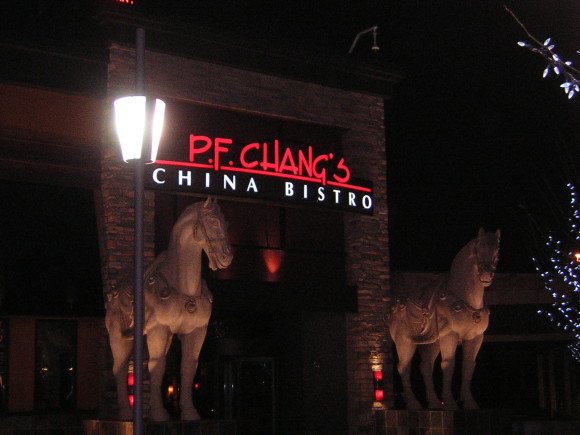Last updated on December 12, 2015

Courtesy of my wife, who is much better at keeping up with food policy news than I am, here is an article about how PF Chang’s is getting sued for charging an extra dollar for a gluten-free version of its meals:
On November 24th, a Northern District of California judge refused to dismiss an Unruh Civil Rights Act class action lawsuit against the popular restaurant chain, P.F. Chang’s. The plaintiff alleged that the $1 upcharge the restaurant implemented for gluten-free menu items unfairly discriminated against people who have celiac disease …
“The ultimate question is whether P.F. Chang’s, in providing gluten-free meals, is providing different products or whether the price differential with regular meals is a pretext for discrimination against those with celiac disease. Accepting plaintiff’s allegations as true, she has stated a plausible claim for relief,” stated Judge Ronald M. Whyte.
(Before anything else, let me make something clear: I feel for those who suffer from celiac. My best friend’s wife suffers from celiac, and so did one of our friends and neighbors when we lived in North Carolina. From what they have told me, living with celiac makes life extremely difficult.)
With that out of the way, PF Chang’s presumably charges a higher price because the marginal cost (MC) of providing a GF meal is higher than the MC of providing a regular, non-GF meal. Assuming that the market in which PF Chang’s operates is close to perfectly competitive, forcing them to charge the same price for GF foods and non-GF foods will result in them raising the price of non-GF foods to cover the loss they incur on GF foods. In other words, non-GF consumers will subsidize the consumption of GF consumers.
But raising the price of non-GF items will necessarily mean that the marginal non-GF consumer–the one whose willingness to pay (WTP) exactly equaled the price of non-GF foods before that price increased–will no longer want to eat at PF Chang’s, which will decrease the chain’s revenue. Conversely, lowering the price of GF items will necessarily mean that the marginal GF non-consumer–the one whose WTP was just under the $1-surcharge price of GF foods–will want to eat at PF Chang’s, which will increase the firm’s revenue.
Overall, it is not possible to tell which effect will dominate, and without knowing the chain’s cost structure, it is impossible to tell what would happen to profit when all is said and done. But the fact that PF Chang’s hasn’t already made that change in equilibrium is probably an indication that its profits would be lower under a regime wherein non-GF consumers subsidize the consumption of GF consumers.
As the article notes, this will most likely hinge on whether PF Chang’s can successfully argue that GF and non-GF foods are not the same thing, and that they have different costs. Price discrimination in itself is not illegal: As I teach my students in the chapter on monopoly, whenever you see a discount for the elderly, for students, etc., this is price discrimination. I have a hard time seeing why it would be legal to price-discriminate against working-age adults, but not against people who order GF foods (who probably pay more for GF foods at the grocery store anyway). And if one takes the Posner hypothesis, according to which the Common Law evolves so as to maximize efficiency, seriously, one should expect the efficient solution to prevail. That is, one should expect PF Chang’s to be able to keep on price-discriminating, since that is the solution wherein price equals marginal cost for each good, without there being any efficiency loss (not to mention a potential profit loss) due to cross-subsidization.